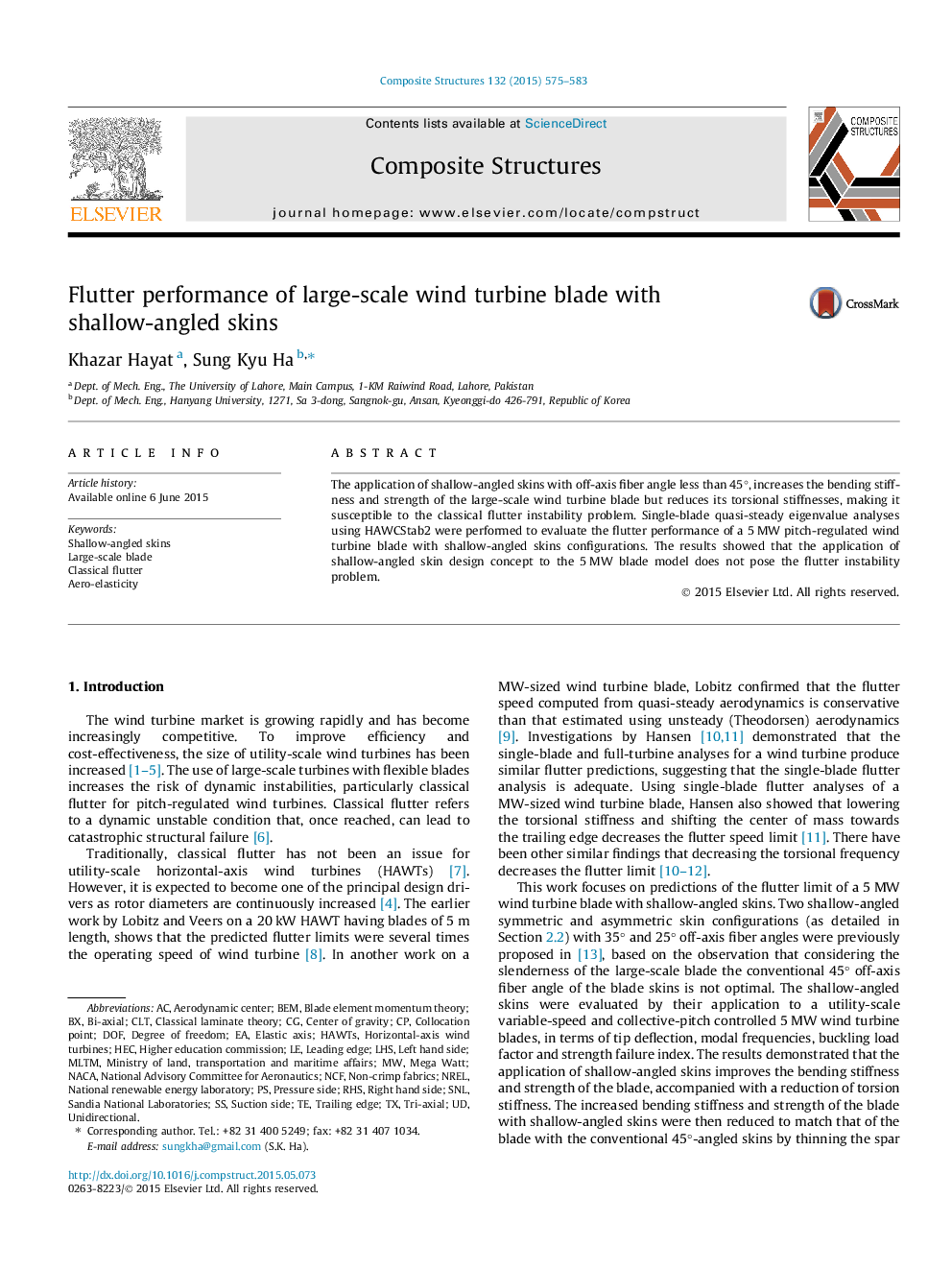| Article ID | Journal | Published Year | Pages | File Type |
|---|---|---|---|---|
| 251110 | Composite Structures | 2015 | 9 Pages |
Abstract
The application of shallow-angled skins with off-axis fiber angle less than 45°, increases the bending stiffness and strength of the large-scale wind turbine blade but reduces its torsional stiffnesses, making it susceptible to the classical flutter instability problem. Single-blade quasi-steady eigenvalue analyses using HAWCStab2 were performed to evaluate the flutter performance of a 5 MW pitch-regulated wind turbine blade with shallow-angled skins configurations. The results showed that the application of shallow-angled skin design concept to the 5 MW blade model does not pose the flutter instability problem.
Related Topics
Physical Sciences and Engineering
Engineering
Civil and Structural Engineering
Authors
Khazar Hayat, Sung Kyu Ha,
